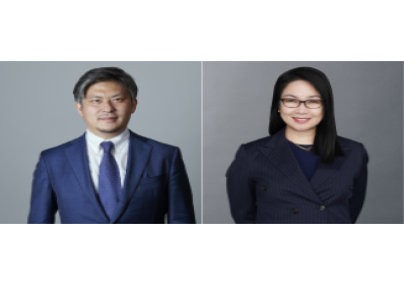The plan to build a financial district from scratch was viewed by Saudi Arabia's neighbors as among the glossiest excesses of the kingdom's oil boom profligacy: a white elephant in the making, unlikely to attract tenants and possibly never even to be completed.
The creators of the King Abdullah Financial District (KAFD) envisaged a kind of mini-Dubai, a haven for foreign financial services and investors as well as local banks and companies currently doing business from offices all over Riyadh.
But more than 10 years later -- and a year after it was supposed to be finished -- most of the 1.6-million-sq-metre district on the edge of Riyadh is still a construction site, and no businesses have moved in.
Reform-minded Deputy Crown Prince Mohammed bin Salman said last month he wants to salvage the $10 billion project. The Public Investment Fund, reimagined as the world's largest sovereign wealth fund, will be based there and sources have said it will also own the project.
According to the prince's "Vision 2030", KAFD will become a "special zone" with internationally competitive regulations, an easier visa regime and a direct connection to the airport, steps he hopes will "increase the chances of ... success".
Another change is to increase the amount of residential use from the 1.7 million sq meters now designated for office space. According to a 2015 report by real estate analyst Jones Lang LaSalle, rents are bottoming out in Riyadh's current 2.5 million sq meters of office space but prices for residential units are rising.
Potential tenants and investors are both hopeful and skeptical about the plan.
"The potential is amazing. The inside is impressive. I'd like to live there," said one Dubai-based expatriate who does business in Saudi and who has toured the site. "As an urban space it's interesting, with its design and architecture."
He questioned how successful the project could be in the current economic climate, however. The main contractor is Saudi Binladen Group, the biggest construction firm in the kingdom, which has been struggling since last year.
"It will not be finished. Decision-making is very slow (on the project, and) people don't have cash," he said. Like other business people interviewed for this story, he didn't want to be named expressing an opinion about such an important royal initiative.
A senior Saudi former banker expressed similar concerns.
"If the plan does create a genuine free zone and makes things smoother for newcomers, it'll be 'bingo!'" he said, but added that a recovery in the oil-dependent economy was key.
Another senior Gulf banker said his firm had no plans to move into the complex despite its "impressive" looks, and expressed concern that banks might only be able to rent, rather than own, buildings there.
MORE RESIDENTIAL SPACE
Inside the district last week, swallows swooped between palm trees and sparrows pecked among decorative desert shrubs near the almost completed conference center. The parts that are finished include sections of its stone-paved "wadi" walkway and distinctive glass towers. From high in one tower, swimming pools and children's playgrounds could be seen on other roofs.
Jacob Kurek, a partner at the firm responsible for the KAFD masterplan, Danish firm Henning Larsen, said the original plans were flexible enough to transform space earmarked for offices into residences or retail space. A direct link to the airport would be easy to install via Riyadh's new metro, which will have a station at KAFD, he said.
Other changes, such as a different regulatory regime, visa exemptions and any blunting of Saudi Arabia's strict social restrictions, would be more complicated, however.
At the moment, visas can take many days to arrange and require a complex process of invitation by a sponsor and plenty of supplementary documentation. Setting up a business means getting permissions from many government departments.
Mustafa Alani, a security expert with close ties to the Saudi Interior Ministry, said visa exemptions could work like the waiver program in the United States, or like residence permits issued by free zones in the United Arab Emirates.
"It's not a visa, but it's not a free walk-in either. There might be a geographical restriction," he said, suggesting those who enter on the special visas might be forbidden to leave KAFD, or be limited to the Saudi capital.
According to rules dictated by Saudi Arabia's powerful conservative clerics, women must wear an ankle-length cloak in public and are forbidden from driving. Men and women who are not related may not mingle unchaperoned. Cinemas, music concerts and dancing are banned and alcohol and pork are illegal. Businesses must shut for half an hour during each of five daily prayers.
Saudi Arabia has found ways to accommodate foreigners, however. Expatriate compounds, hidden behind high walls, protected by army gun emplacements, to which Saudi nationals are usually forbidden entry, allow foreigners to dress and behave much as they do in the West.
Such extreme segregation could not work for a project like KAFD, which is also marketed at Saudi businesses and residents.
But there are other examples of areas that Saudis can visit that enjoy a special status and do not require strict Islamic dress codes or forbid gender mixing, like Riyadh's Diplomatic Quarter.
For one Western business executive now living in Dubai, the social restrictions, especially those on women, were among the most important factors in any decision to move to Saudi.
"To me, the visas are nice, but they're not even on the list of the top ten things that need to change," he said.


